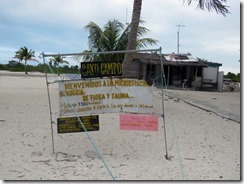 Imagine a tropical island, a couple of coconut trees, crystal clear water in shades of blue you did not even know existed, underwater lobsters, fish, sharks, rays and turtles in abundance, on the island giant iguanas sunbathing in the sun, two or three crocodiles hiding in a mangrove pond, jutias (a small mammal) running around, vultures, herons, pelicans and ospreys fly overhead of dozens of little monkeys and in between all these three men living in a small wooden hut. They fish, they hunt and they survive out of what nature gives them. You could think that
Imagine a tropical island, a couple of coconut trees, crystal clear water in shades of blue you did not even know existed, underwater lobsters, fish, sharks, rays and turtles in abundance, on the island giant iguanas sunbathing in the sun, two or three crocodiles hiding in a mangrove pond, jutias (a small mammal) running around, vultures, herons, pelicans and ospreys fly overhead of dozens of little monkeys and in between all these three men living in a small wooden hut. They fish, they hunt and they survive out of what nature gives them. You could think that
these men are the survivors of a sunken ship and are waiting to be rescued like Robinson Crusoe. Or maybe they are hippies in a back-to-nature sort of thing experimenting an alternative way of life. But in reality these three men were sent there by their own government as rangers to take care of the island’s monkeys population. They spend 30 days on the island, then 30 days back at home which actually is another island though more civilized – Isla de la Juventud. They bring with them to the island some rice, beans, tobacco, garlic and some onions. The rest comes from what they find on and around the island.
from left to right – Louis, Alnorto, and Papa Noel
Louis, as the oldest of the three had some sort of a silent authority and respect between the others
The ranger’s hut. We’re watching Alnorto feeding the monkeys. The warm clothes are the result of another cold front that passed over us.
The monkeys were brought to the island about 30 years ago from Vietnam for medical experiments. Today they are rarely used for that end because another monkeys farm was created somewhere on the mainland but for the moment the monkeys and thus the rangers are still here. There are two clans one on the north side of the island the other on the south side. Those on the south side are coming twice a day to be fed and drink water. The northern clan revolted and since many years now don’t show up for feeding anymore. Apparently they learned to survive by themselves.
Every morning and afternoon about 50 monkeys come to grab something to eat
Amos, Noa and Adi got to feed the monkeys a couple of times. When they handed them coconut meat the monkeys would take it out of their hands just as a human would do.
The day we arrived at Cayo Campos Louis told us it’s their 30th day on the island and they are now waiting for the boat to come and take them back home. When we left, 10 days later, they were still waiting for the boat. We did not plan staying on the island for that long but we simply had hard time leaving. We settled into a routine – school in the mornings, explorations in the afternoons and aperitif with Louis, Alnorto, and Noel for sunset. Maybe they wanted to get back home but we were more than happy to hear everyday – today the boat is not coming, maybe tomorrow…
To the north of Cayo Campos there are many little mangrove islands that form a maze of shallow and protected waters with constant wind which was perfect ground for exploring with our little sailing dinghy.
this vulture was watching impatiently the monkeys as they were eating
The island and the waters surrounding it were amazing enough but having the hospitality of these three Cubans made our stay an unforgettable one. They shared with us their time and passion for the island, they took us fishing, they cooked us lobsters and Jutias (yes these little furry mammals), they guided us on our hunt for crocodiles, they gave us plenty of food and water for our boat, and we spent hours simply having great time talking around a bottle of rum. They were as much happy to have some company. As Louis told us – after spending 30 days with the same two persons for 24 hours you simply run out of things to say to one another.
not only monkeys like coconuts
There was a well on the island which allowed us to top off our water tanks and shower bags.
Louis wanted to show us how they fish lobster with only a long metal stick with a rounded sharp hook at one end so one day we joined them for a little fishing session. We followed their dinghy to one of the ‘platas’ – sunken concrete plates about 3 meters by 3 meters, each fishing boat ‘owns’ two or three of these and our rangers also owned two of these plates. Louis, which is 72 years old, complains about how cold it is and then jumps in the water. Armed with a hook Alnorto gave me I follow Louis into the water. Alnorto uses their dinghy to pull up the platform about 40 cm high. As the plate rises we can see underneath it dozens of lobsters crawling all around. Louis simply starts to collect them with his stick.
Alnorto weighing anchor
The technique – you slide the hook under the tail of the lobster and than with a swift move you pull upwards. The hook penetrates the soft tail and up to the boat where Alnorto collects the harvest. It takes a little practice and I had many lobsters running away after failed attempts (they give you one try after which they jump and disappear; they are capable of swimming very very fast) but in 20 minutes Louis fished ten and I managed to catch three.
Noel doing dishes
Louis wanted us to take the whole lot. What would we do with 13 lobsters??? We took only 5 small ones and told them to try and sell the bigger ones to the charter boat that just anchored not far from our boat. Louis later showed Virginie how to clean and prepare the lobsters quickly. Another day She and the kids went to the floating fishery behind the cayo where all the local fishermen bring their catch at the end of each day and had a guided tour from one of the fishermen who explained them all about lobsters. In huge submerged cages there were thousands of lobsters waiting to be sent to the processing plant.
Two big barracudas settled under our boat. With all the fish and lobsters we had during our stay they were eating pretty well too
The dock leading to the ranger’s house. Every time we landed our dinghy on this dock we had either Louis, Alnorto or Noel waiting to help us dock, tie the dinghy and get out of it. They would see us approaching, stop whatever they were doing and come towards us. Same story when leaving
On another day a fishermen boat passed next to us asking if we want to have some fish. They did not want money. They wanted rum. All we had left was a half empty bottle of cheap rum but they happily took it and gave us in return four big bonitos. We kept two to ourselves and the other two we gave to Louis. In return he gave Virginie another quick course – this time of how to fillet a bonito fish.
four bonitos for half a bottle of rum…
On yet another day Louis and El Norte came to our boat with bags full of rice, sugar and beans. They thought that after so long on the island we are probably running out of food. When we asked them to stay for a coffee they hesitated at first, afraid the guarda frontera might come and see them, but after some more persuasion they agreed. This by itself felt like a victory. The first time we could be the hosts and not only the guests in Cuba, even if only for a little while.
An osprey on a brake
On a closer look
The same osprey on flight
Apart from taking care of the monkeys the rangers are responsible for maintaining of the paths around the island and for searching for drugs. According to them, when the wind turns to the south it brings with it plenty of small plastic bags – full of drugs. And they collect these and send them to the guarda frontera. The origin of these drugs are drugs-smuggling boats that get bordered somewhere offshore and to avoid getting caught they simply dump their cargo and the southerly wind brings it to the shores of Cuba. We did not take all this very seriously but when we did go for a walk on the southern coast of the Cayo we did find a couple of plastic bags that resemble a lot those you see in cinema where the officer sticks his knife and tastes the white powder. Except that all the bags we found were full of white sand instead. It did not stop the kids from searching for ‘paquet des drogues’
paquet de drogue
The south coast of the island has beautiful sandy beaches
Another sort of a monkey
Virginie really wanted to go and find some real wild crocodiles. Louis explained us the way to the pond where usually one or two crocodiles are to be found. To be sure we will find our way they decided it was a good day for path maintenance and so they left early in the morning and made us road signs along the path. And half way from the pond they waited for us to give us some further instructions. After two hours of walking along a deserted beach under the shade of pine trees we arrived at the famous pond. Virginie with her hunter’s patient was sitting there looking for her croco. Patience pays well to those who have it and she did get to spot first only the eyes and then the whole mouth of one of these crocodiles swimming in the pond. And even we who have absolutely no patience could have a glimpse of him.
going crocodile hunting
a pair of eyes
and a white tooth
and this is the famous pond
We spent ten days on the island. Ten days without internet. Actually 14 as the last time we had internet was in Casilda. How many of you can survive 14 days without 3g, 4g or WiFi, not even a telephone signal. No connection to the virtual world, only to the real one.
I have no clue how this toy ended up on the Cayo but it did have a huge success with the kids
Louis, Alnorto and Noel did 40 days without connection. They have a VHF with which they can talk with the fishermen that work around the Cayo and have a chat with the fishing station which they visit every couple of days to get tobacco and ice for their cooling box. They used to have another radio that was connected to Isla de la Juventud with which they could speak with their families but since they played with their solar charging system which gave them hard time it burnt and does not work anymore. (they connected the solar panels directly to the batteries bypassing the regulator…)
Noel is doing this job since 11 (!) years – coming to the same cay. Louis since 5 years and Alnorto only started half a year ago. Louis is actually retired but to add to his pension he still works as a ranger
Louis telling us about Cuba before the revolution (‘it was much worse than today’)
They have a TV which on good days can have reception of two Cuban TV channels from which they can get the weather. But because their batteries are dead if it is a cloudy day and every day as soon as the sun is in the horizon they have no electricity. We never saw lights on the island after sunset. They go to sleep and wake up with the sun.
We were not completely disconnected as we used our SSB radio every day to download weather files. Without the SSB we would have never been able to stay for that long with no internet connection. On the boat the only news that interest us is the weather but this is not optional. We have to have weather updates especially at this time of the year when fronts follow one another at least once a week.
In the ten days we spent on Cayo Campos we had three fronts coming through. Each bringing cold wind that blew at about 25 to 30 knots which made the anchorage a little rough but nothing dangerous or uncomfortable.
getting ready for another beautiful sunset
It’s also 14 days since we did our last provisioning and this was Cuban style – that is, not much in terms of fresh fruits and vegetables. Even though we were eating plenty of canned food in the last couple of days we still managed to make some delicious meals and it never felt like we were eating bad food. It must have helped that every day we had fresh fish or lobster for either lunch or dinner.
this time watching the sunset from Nomad
But after 14 days we did have the urge for more fresh fruits and vegetables and to get connected again. On our last evening on shore Louis told us they received a call on the VHF and the boat is coming either tomorrow or the next day, this time for sure. After 40 days they are going back home to Nueva Gerona on Isla de la Juventud. We were going there as well so Louis gave us his phone number and made us swear we will call him once we are in Gerona so we can come to see him at his place.
And so we did. But this on the next blog
Thank you Louis, Alnorto and Noel for sharing with us so much of your special world and for having us as your guests on your little Cayo. We sincerely hope that one day you will be our guests.

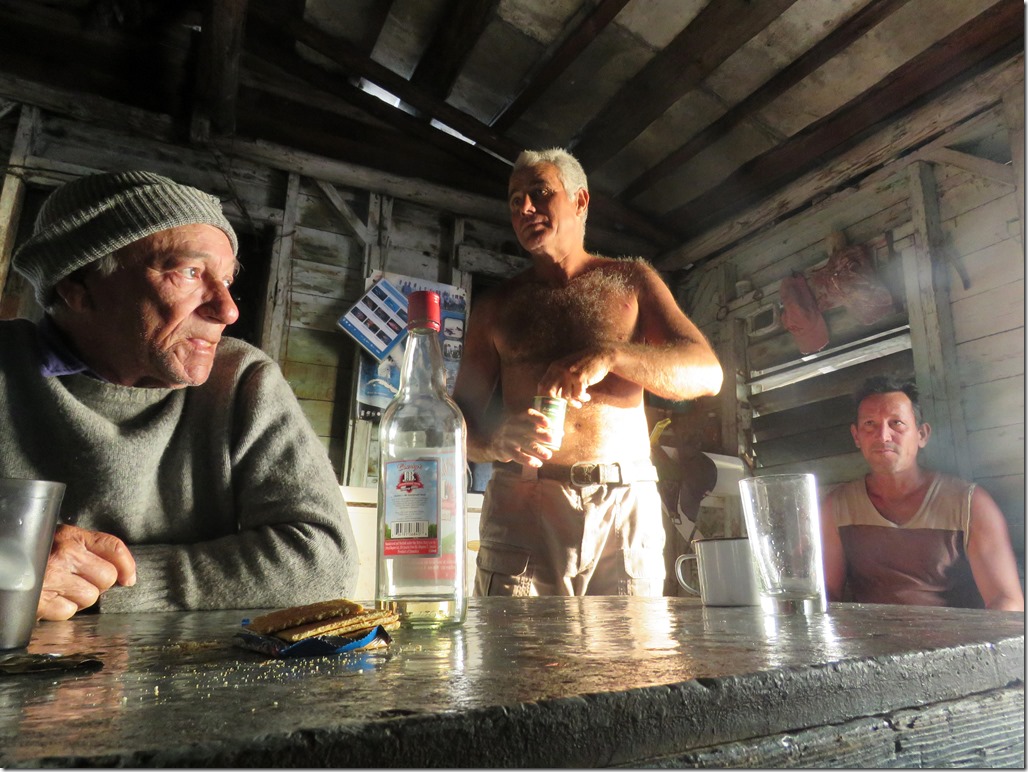
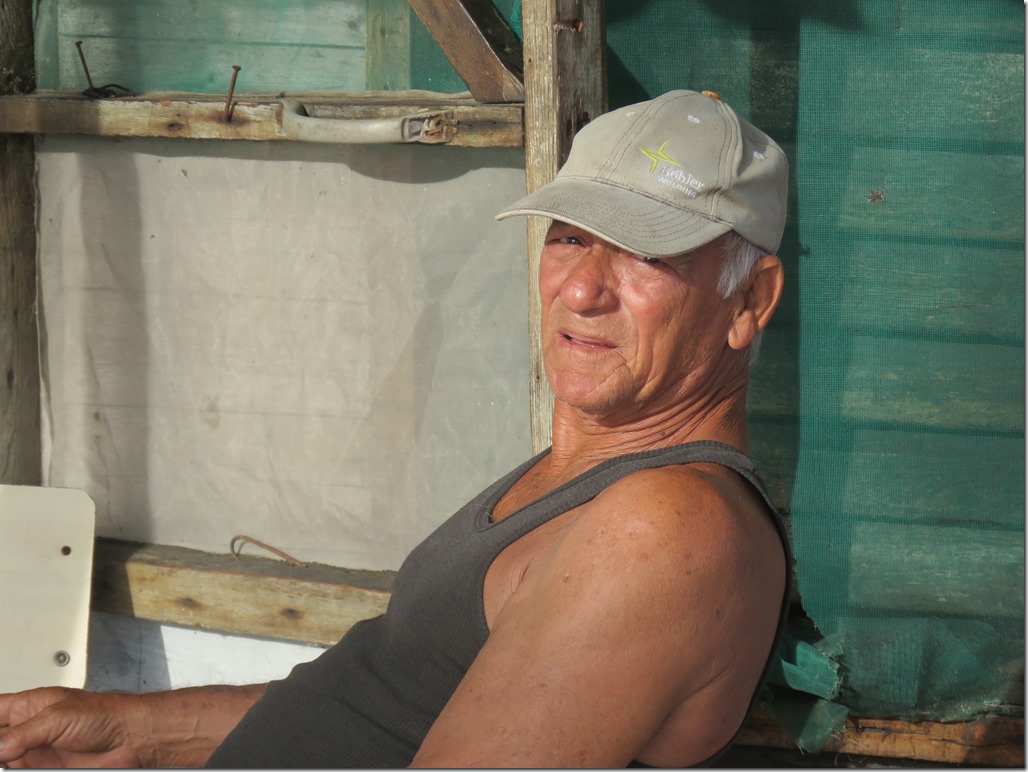
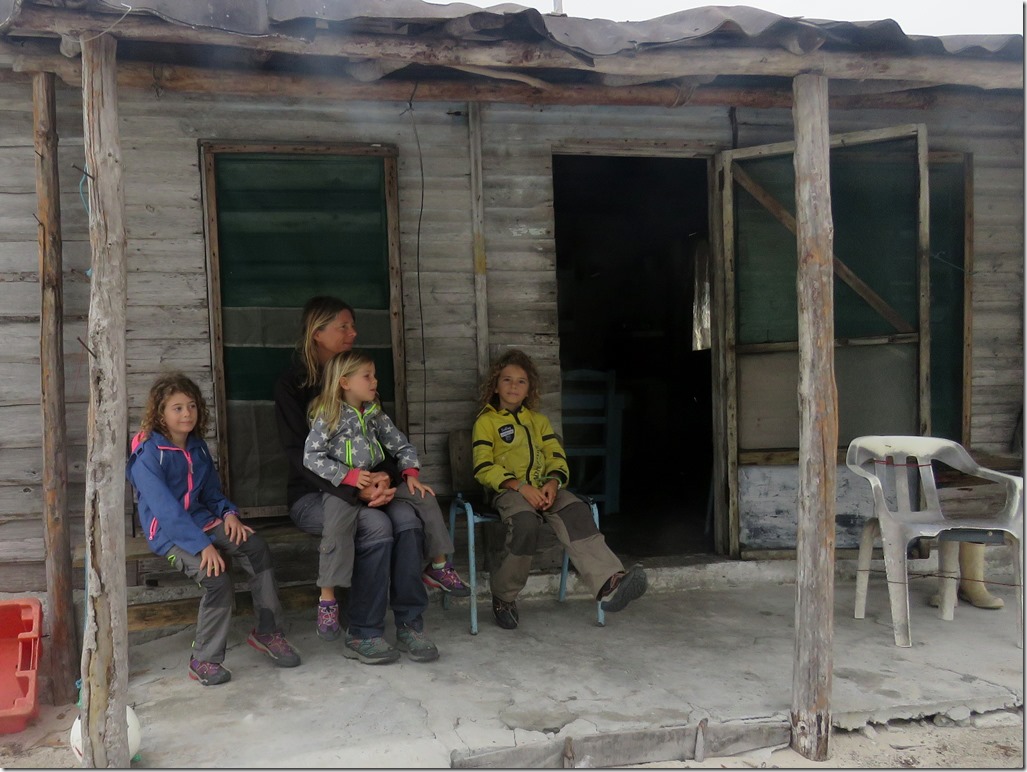
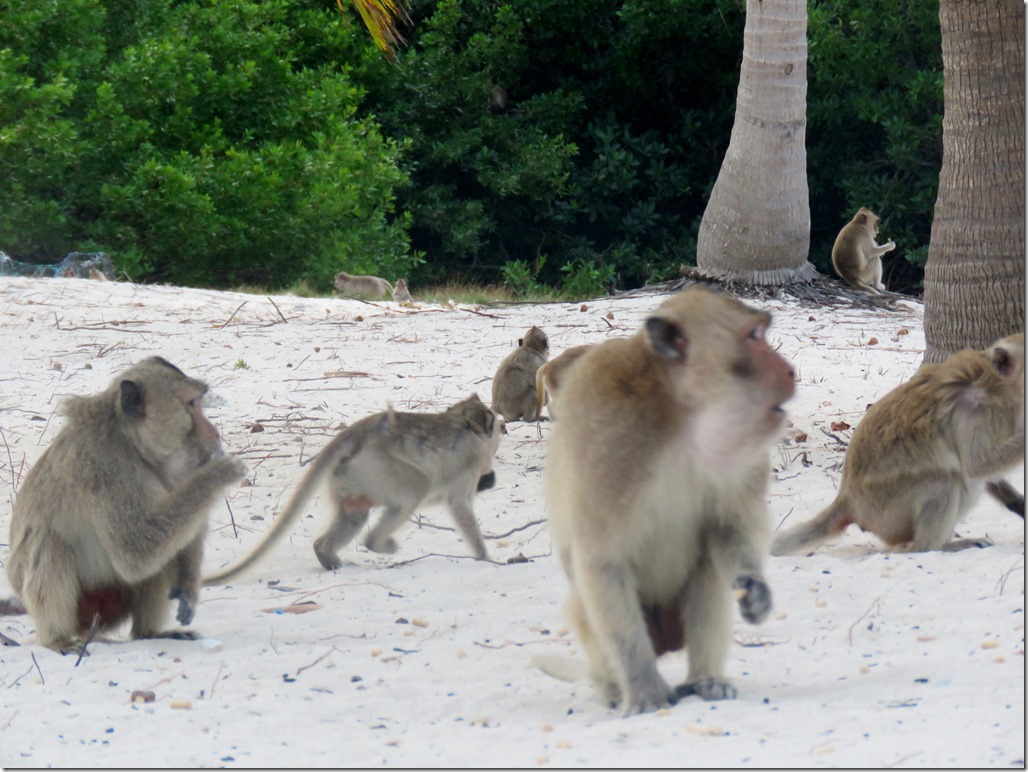
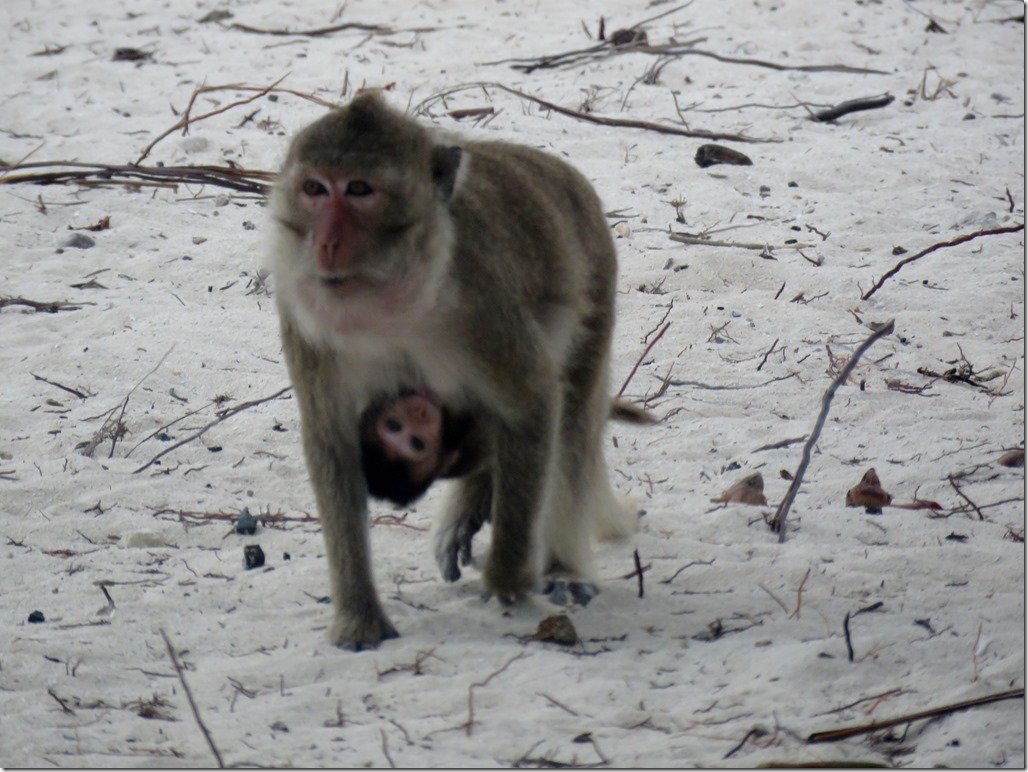
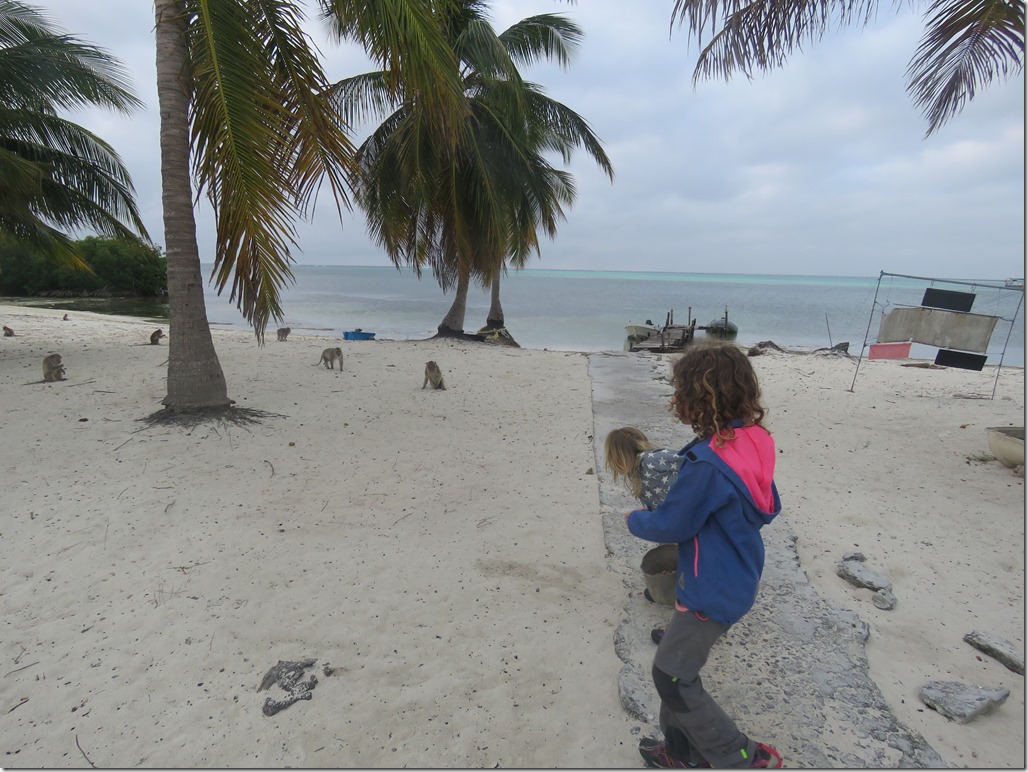
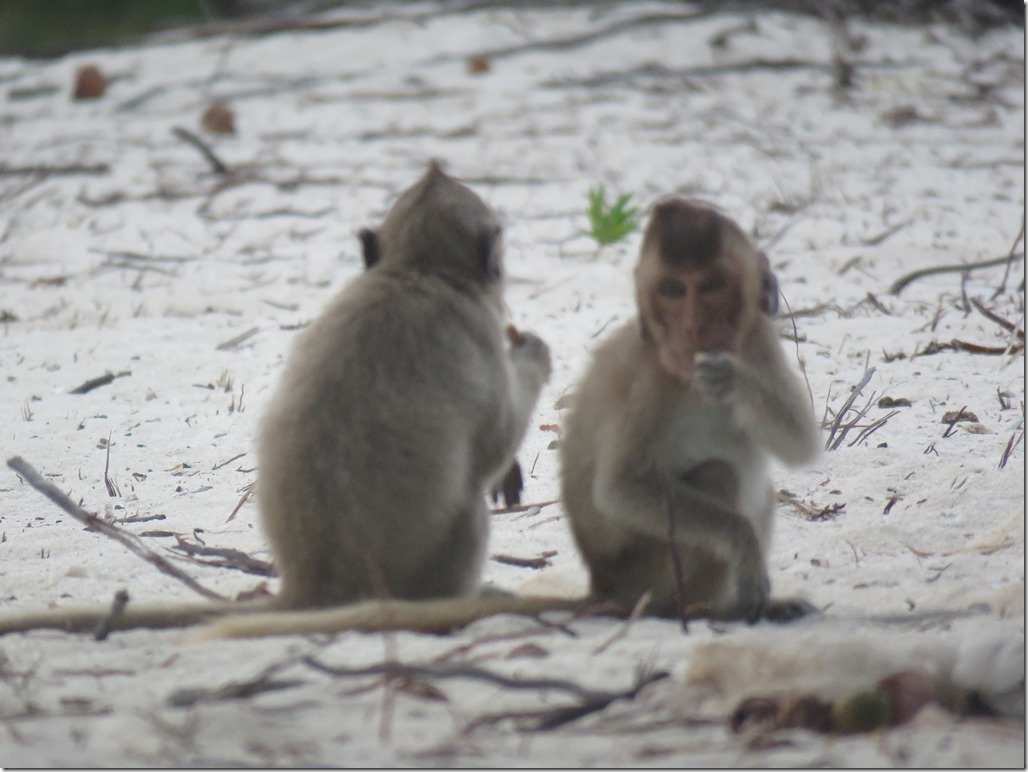
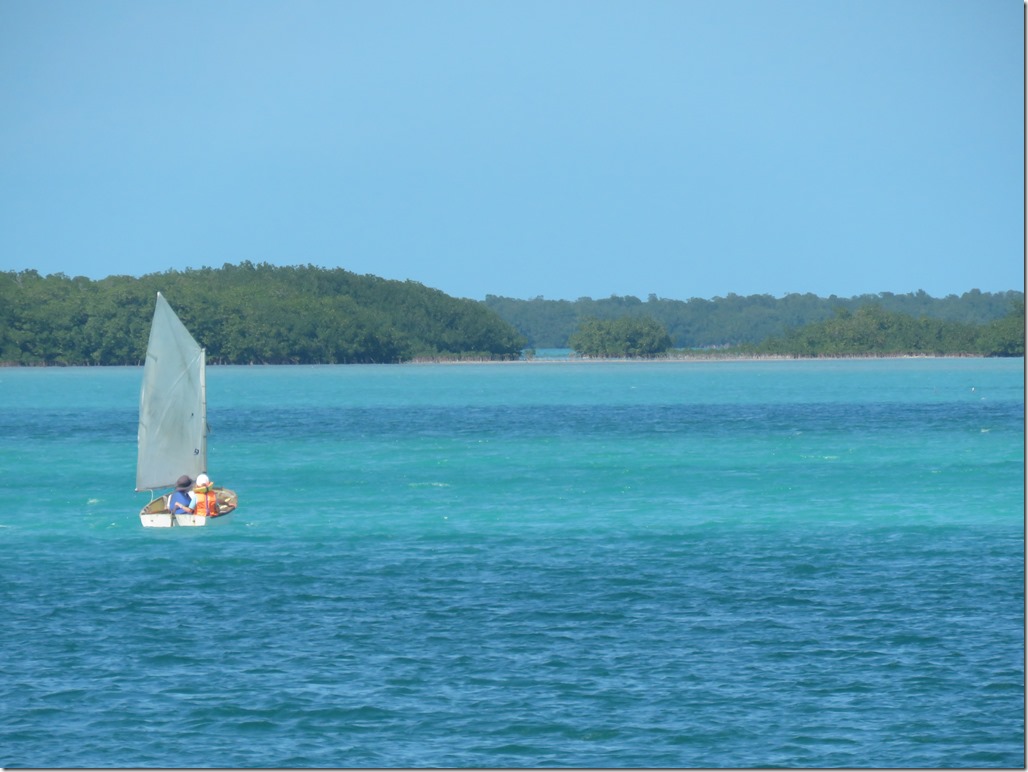
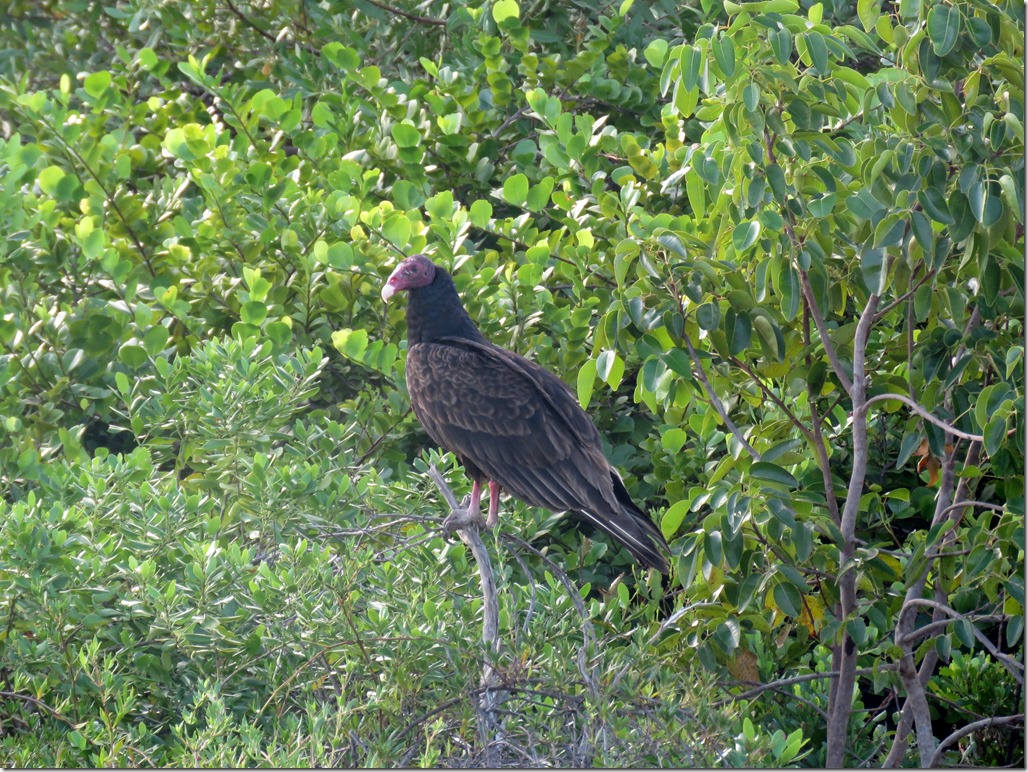
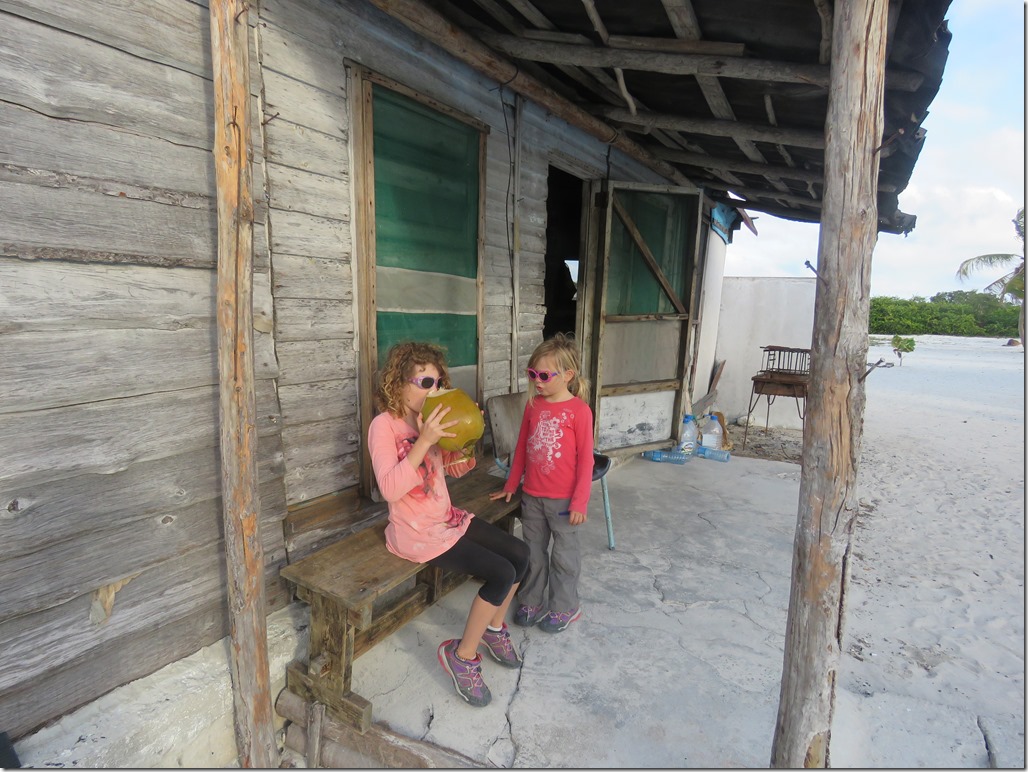
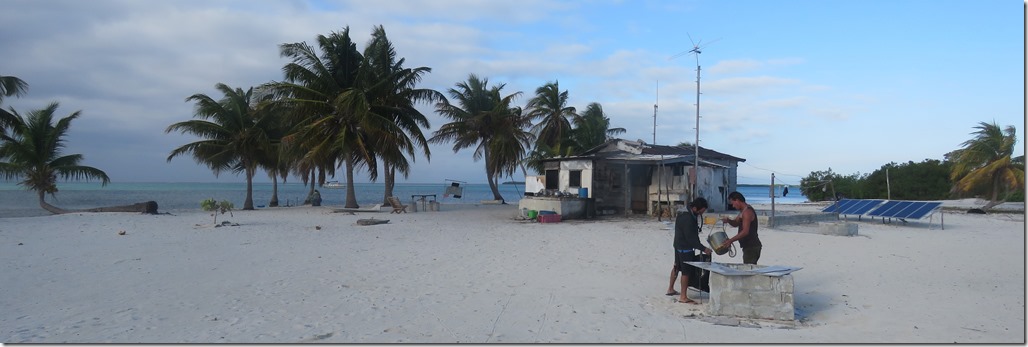
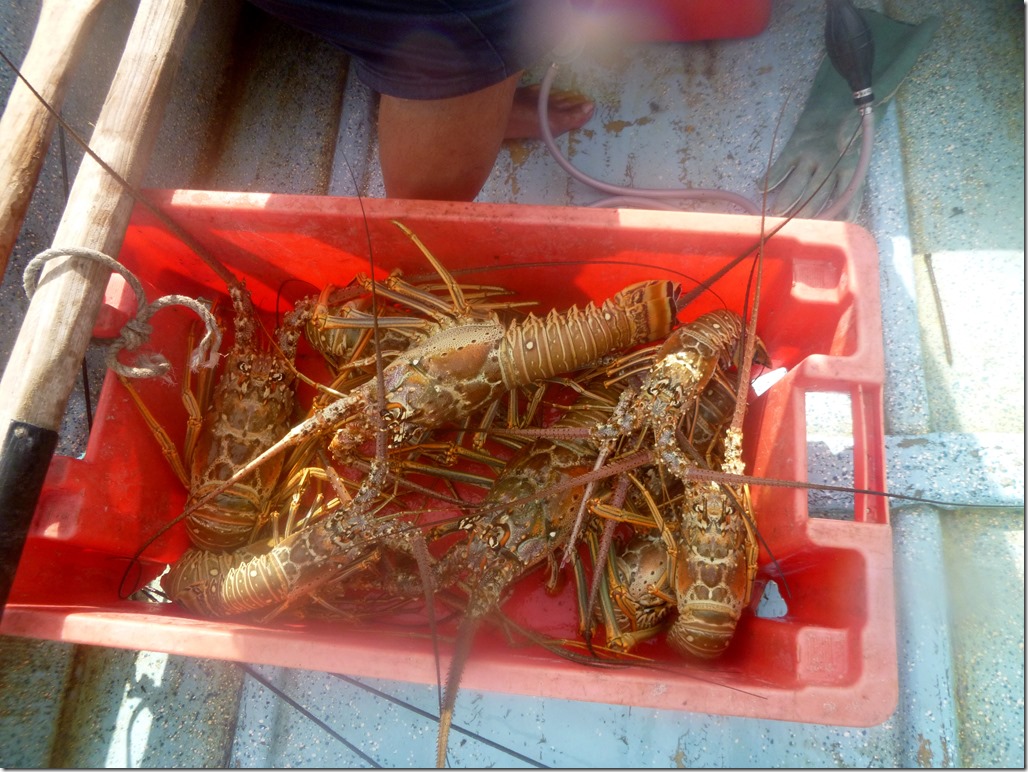
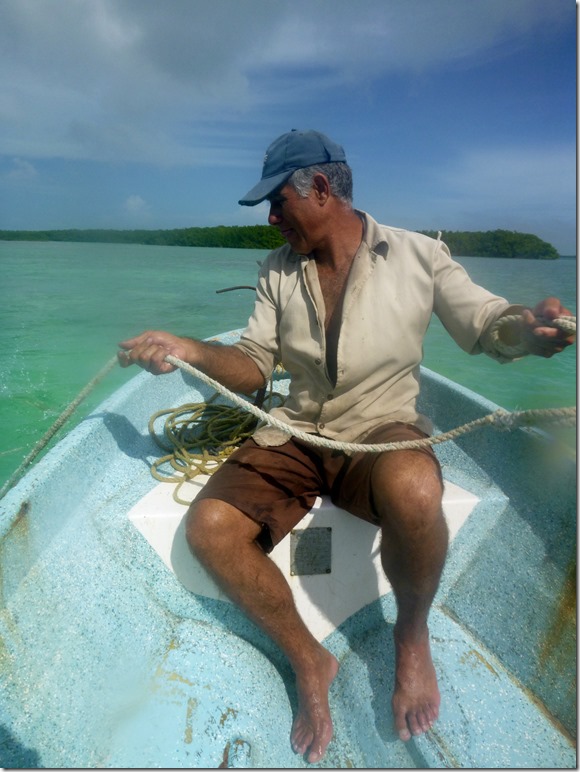

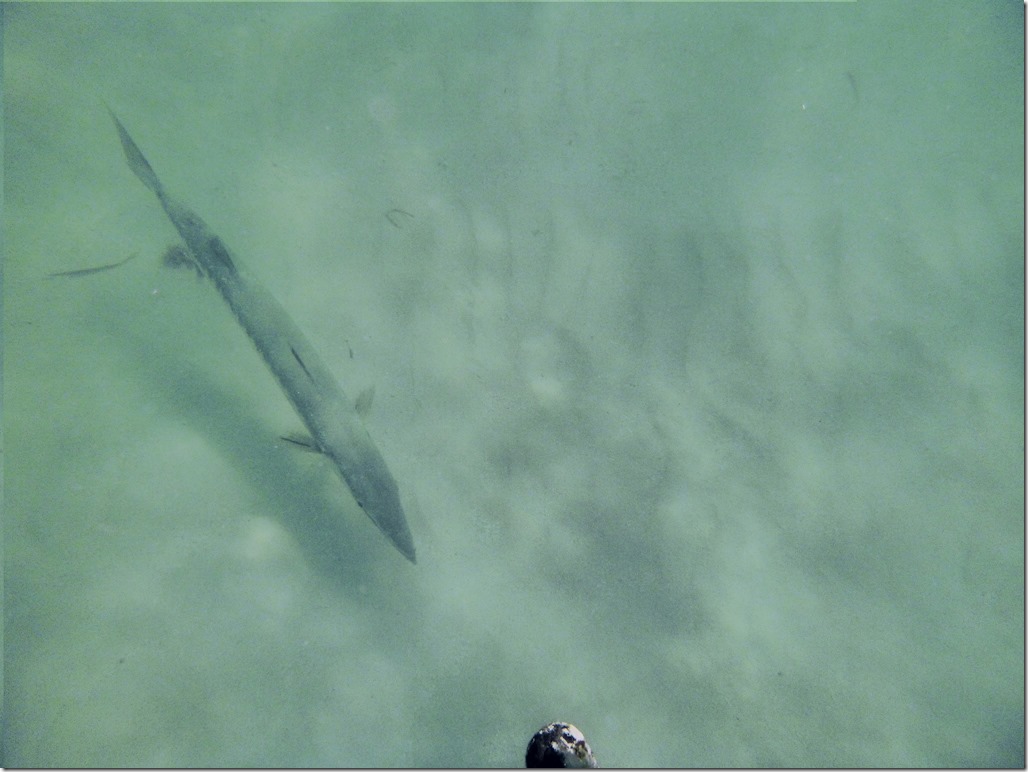
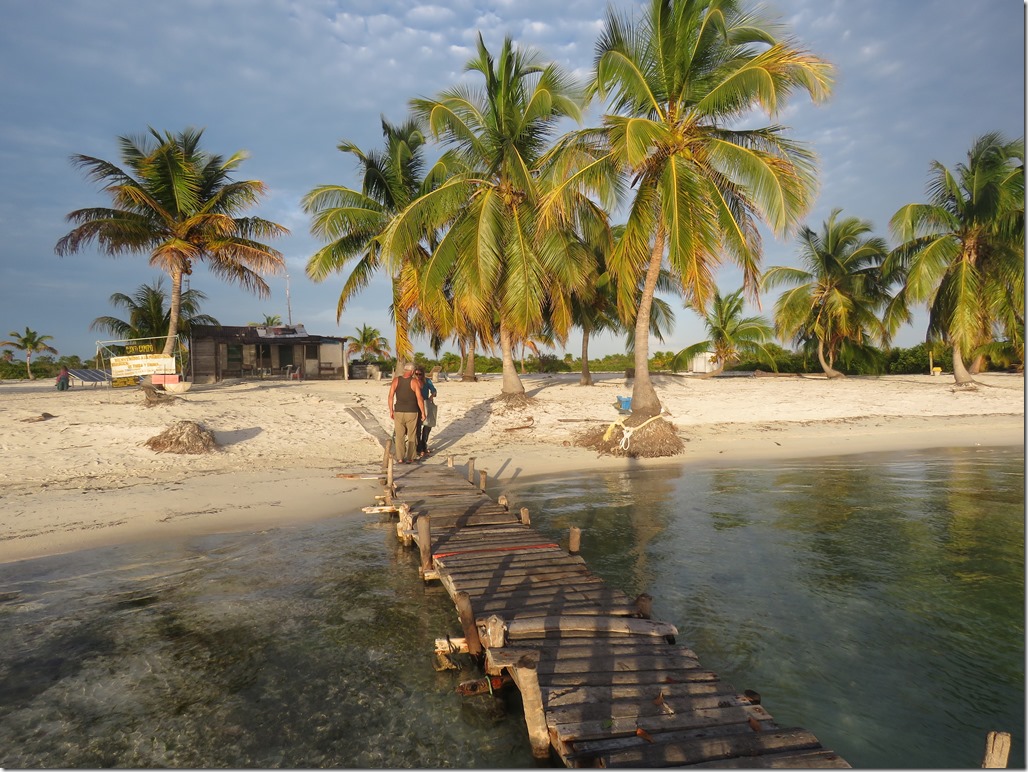
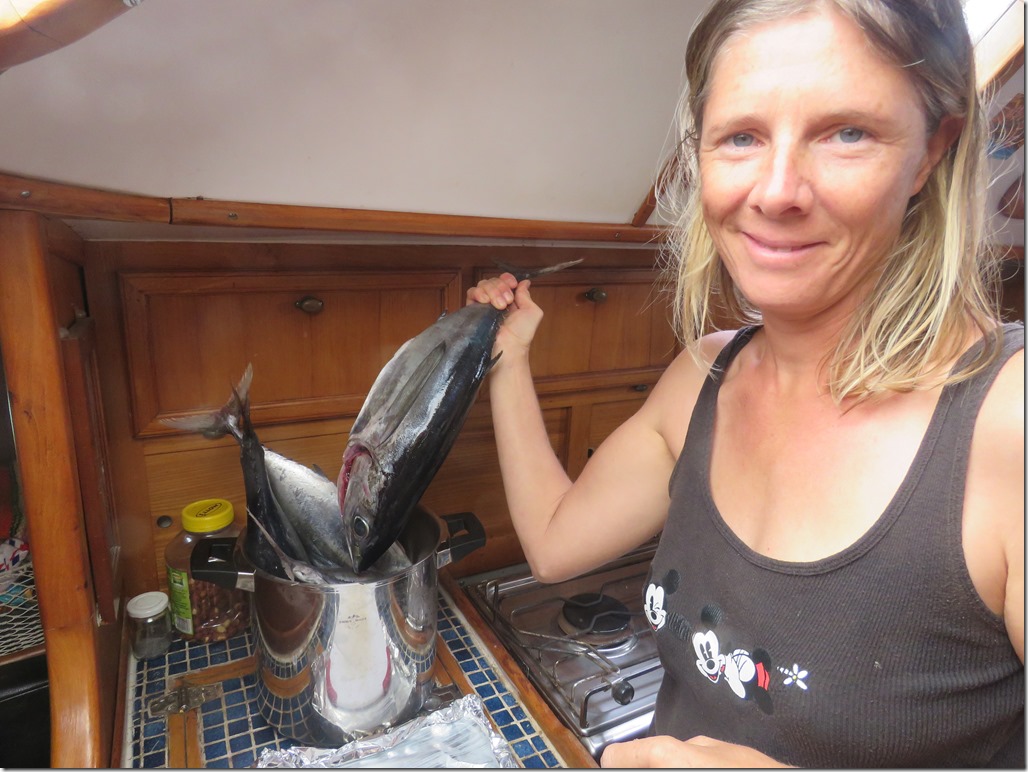
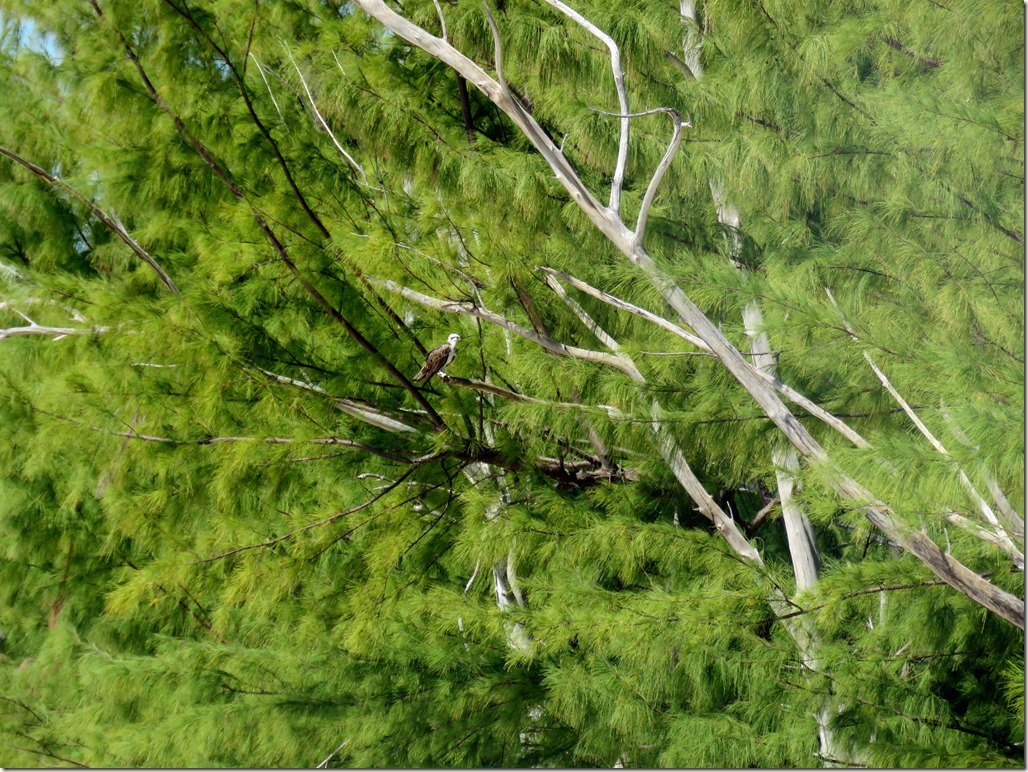
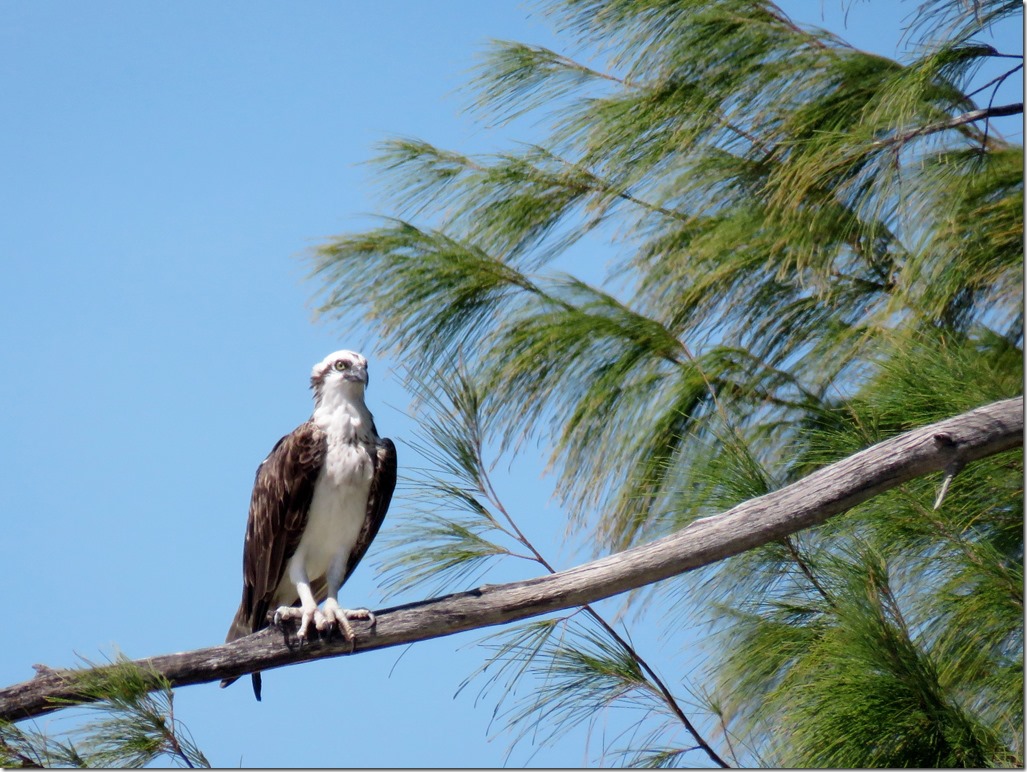
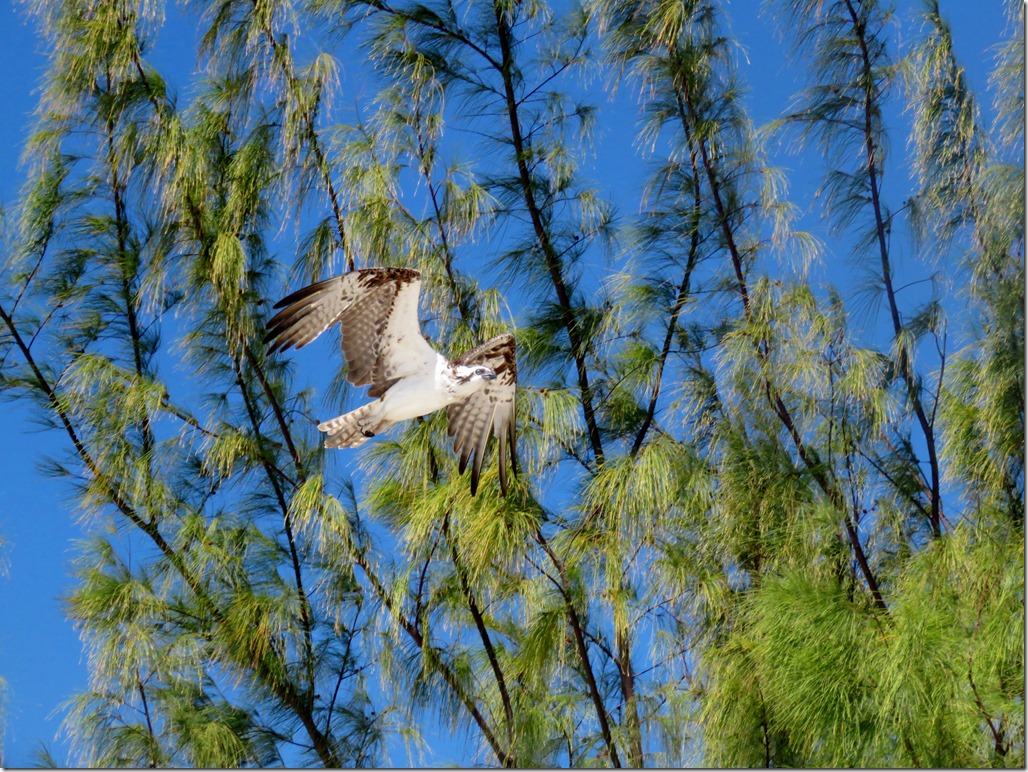
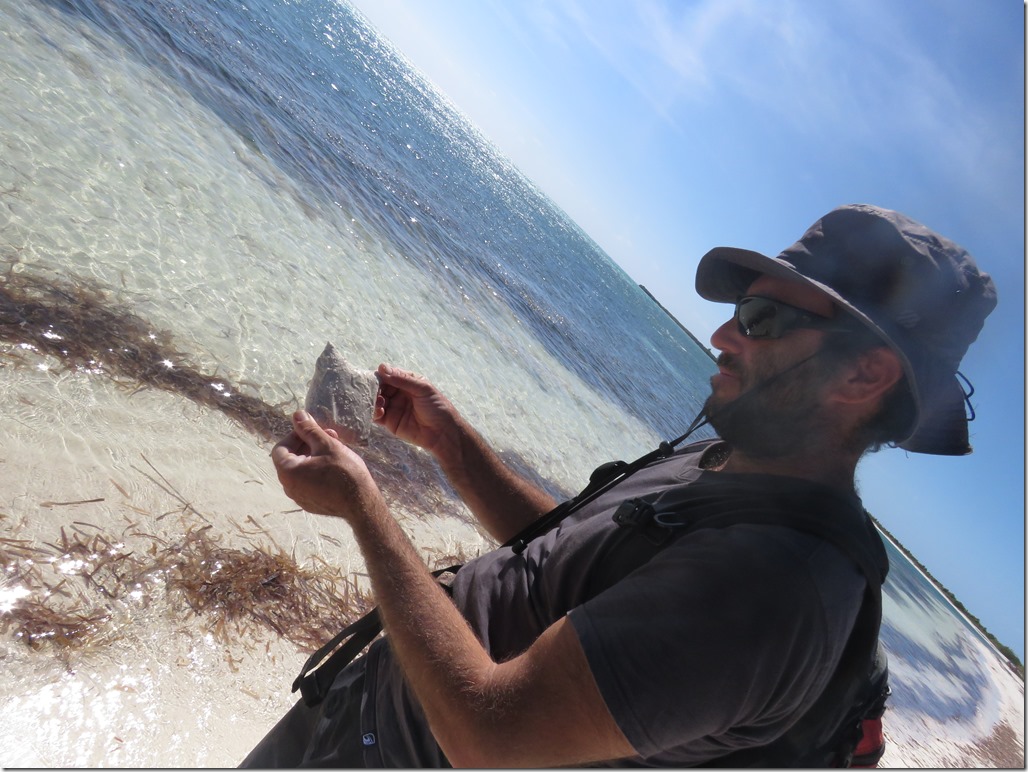
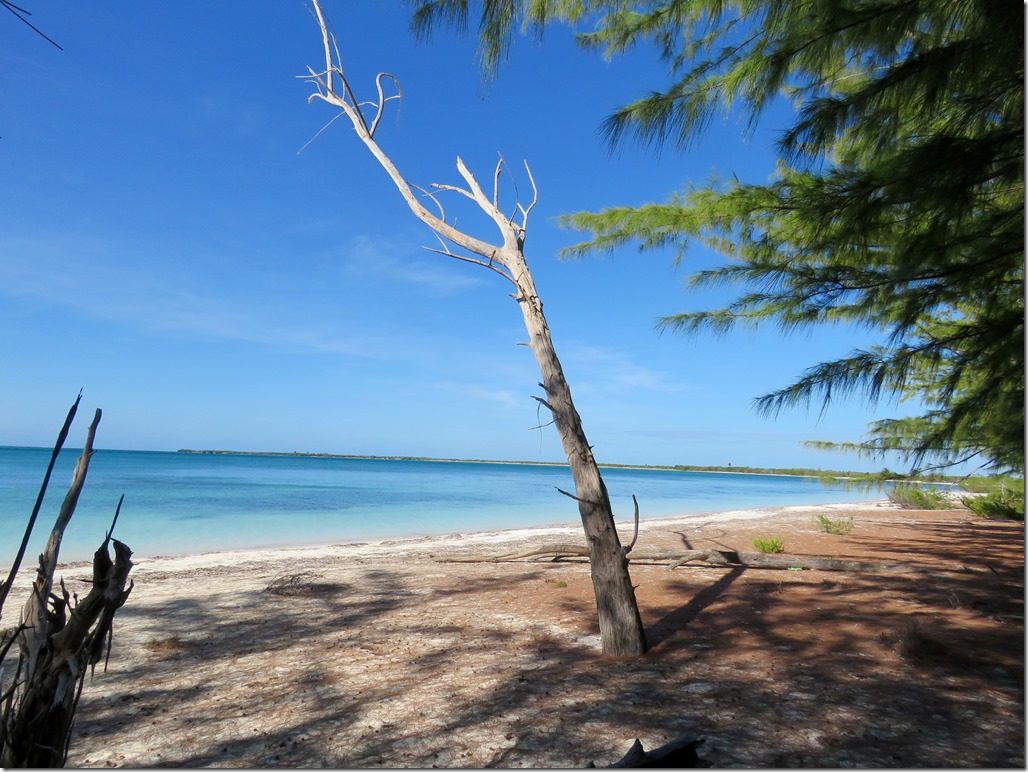
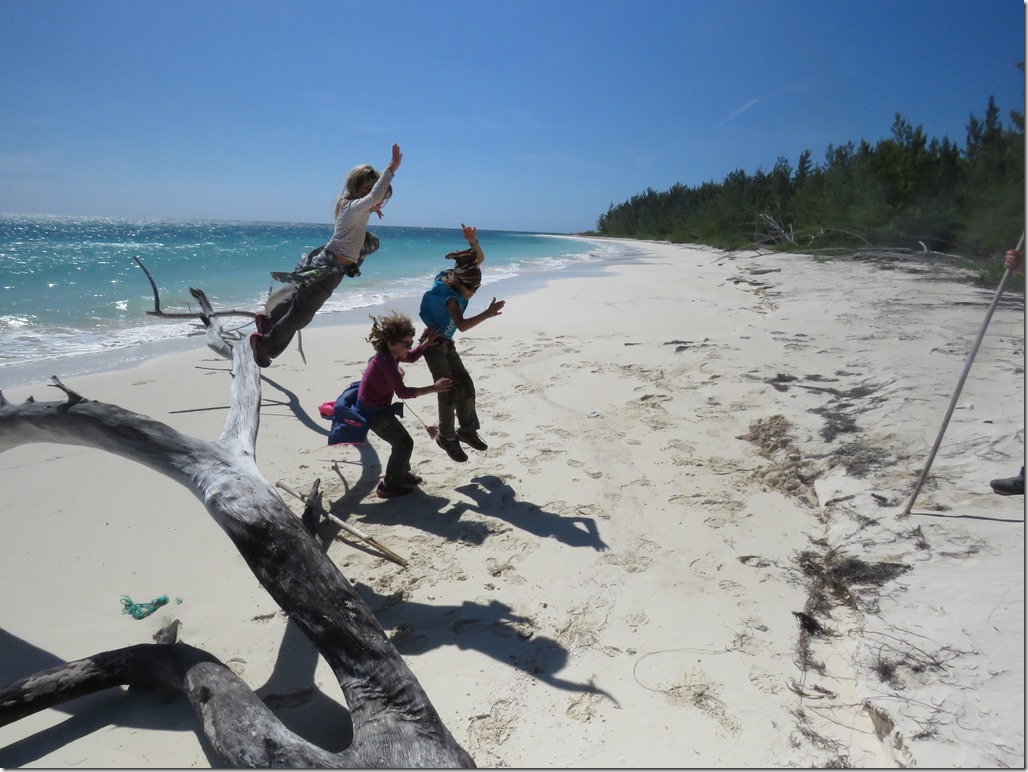
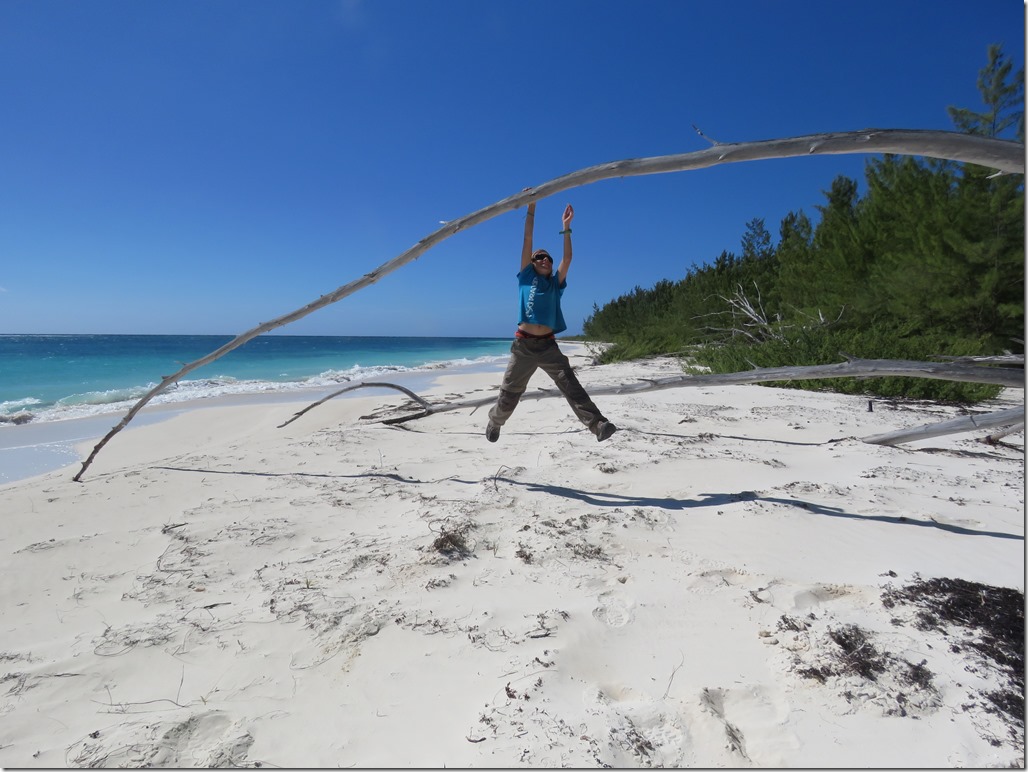
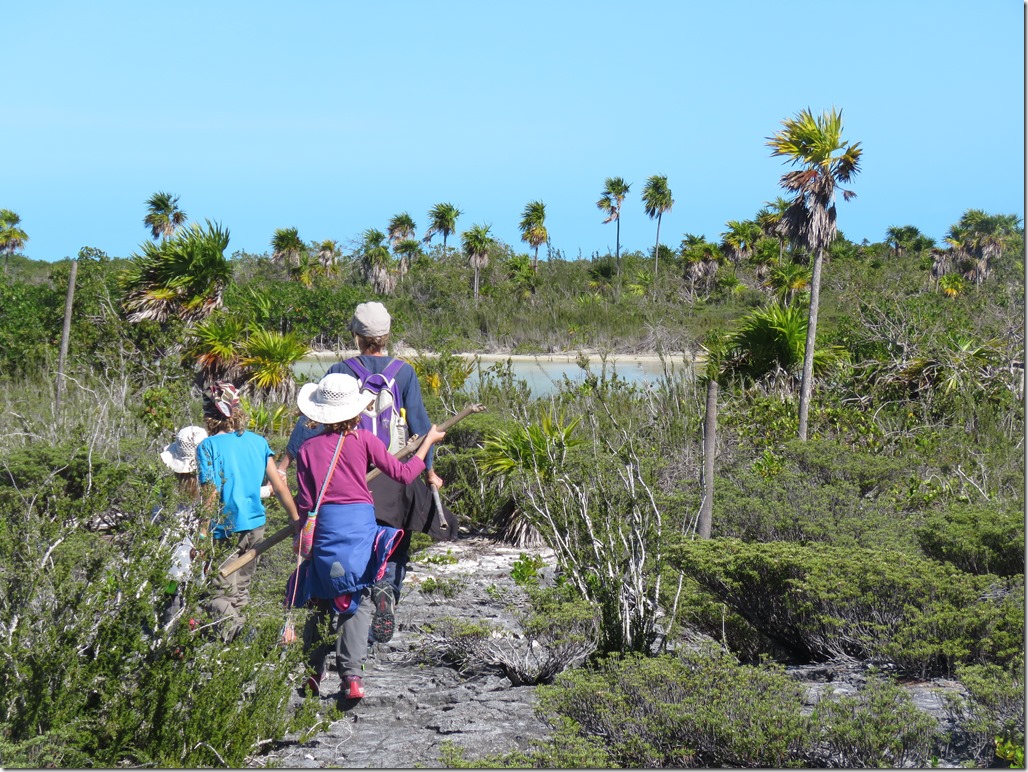
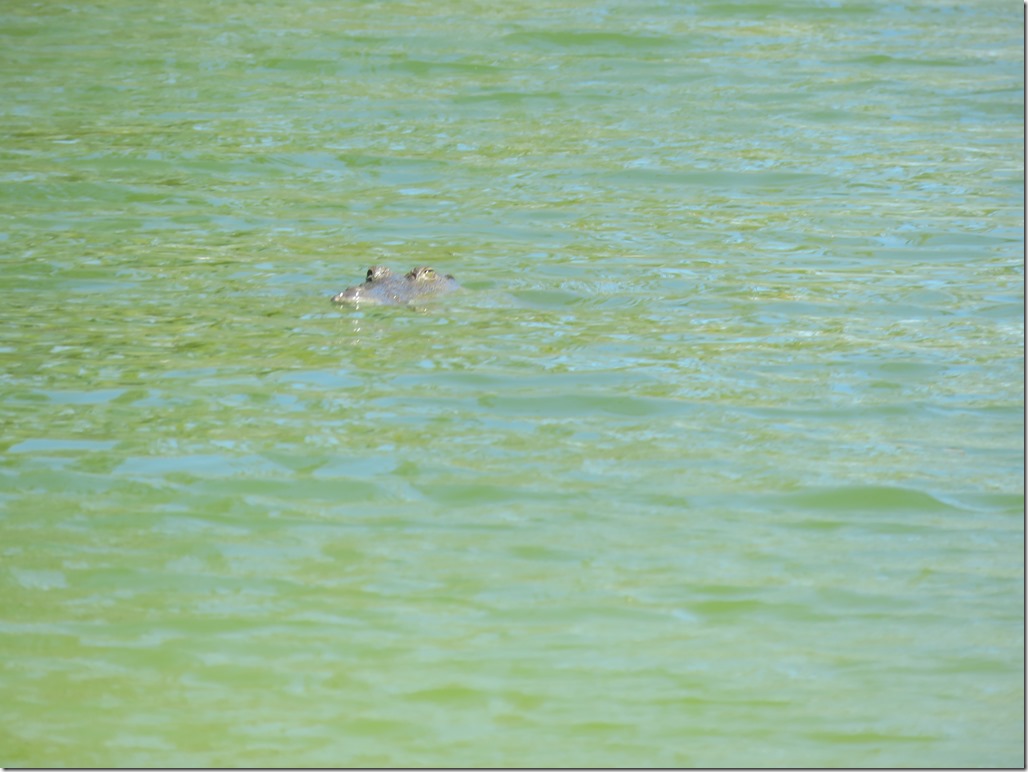
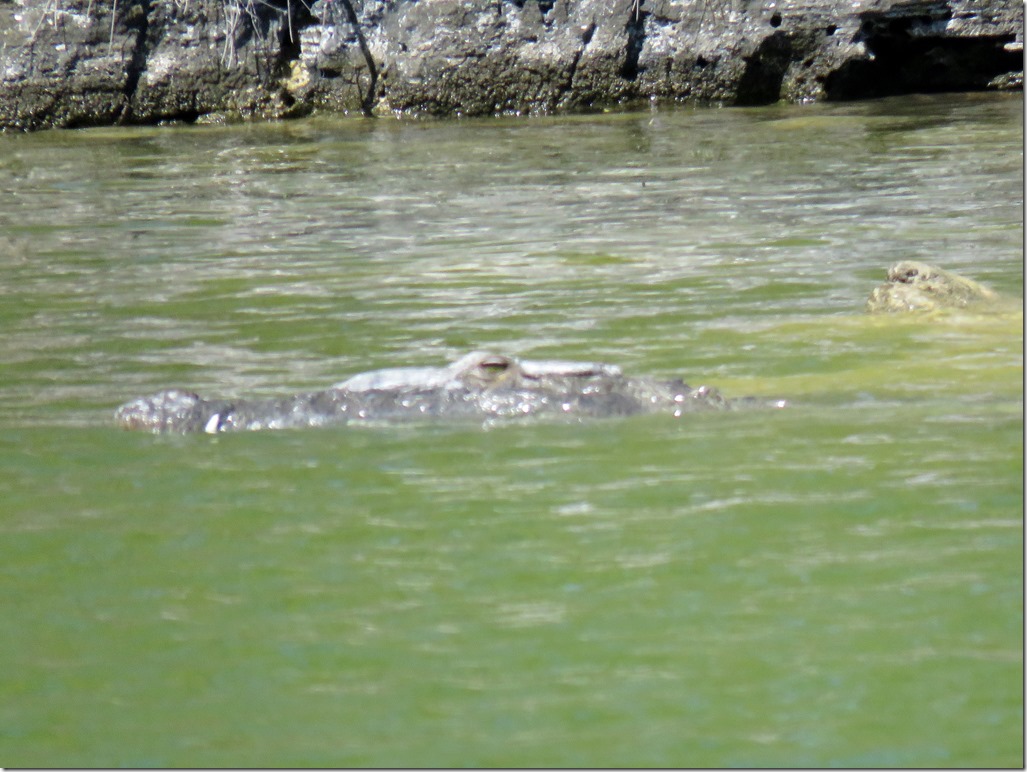
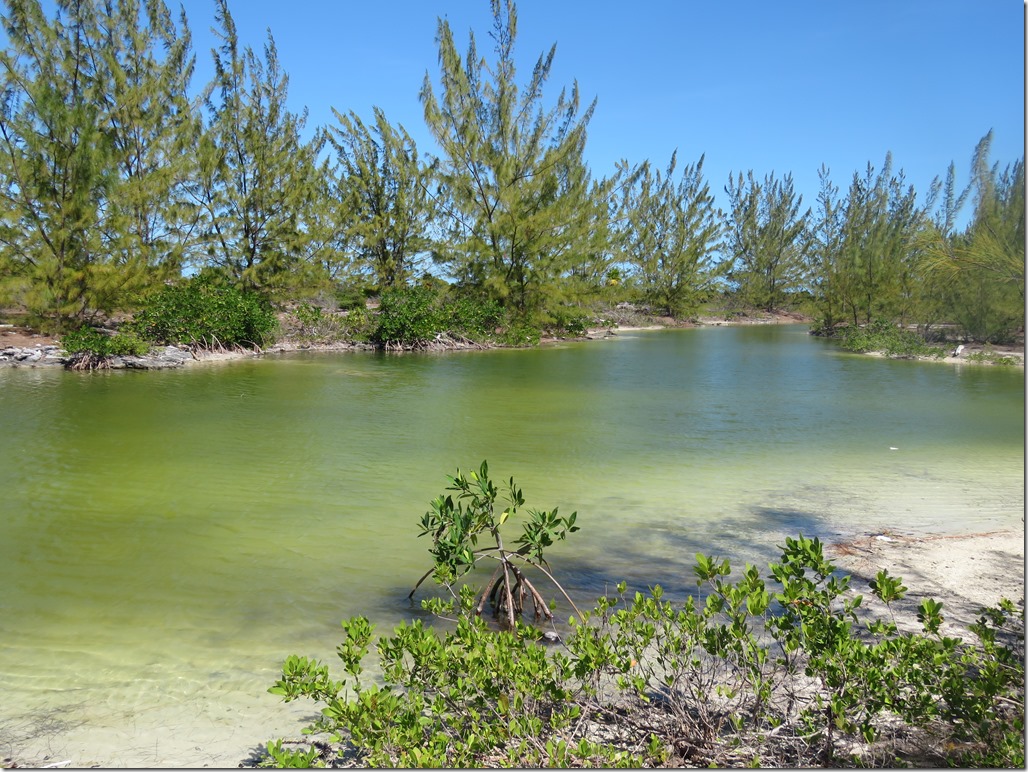
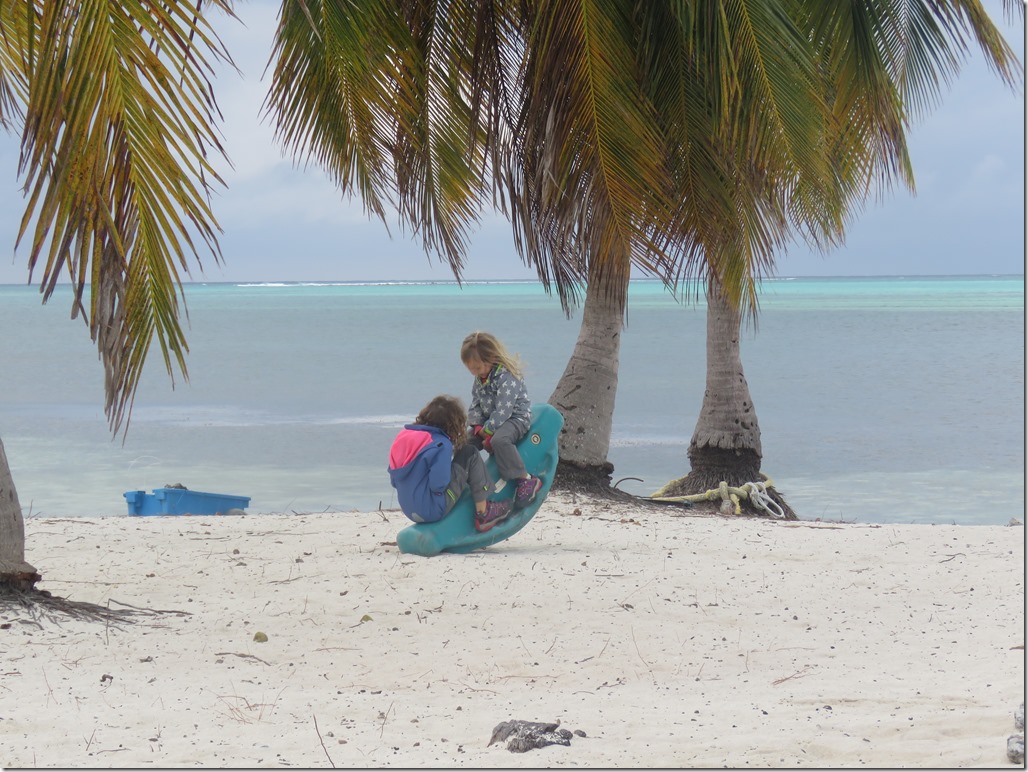
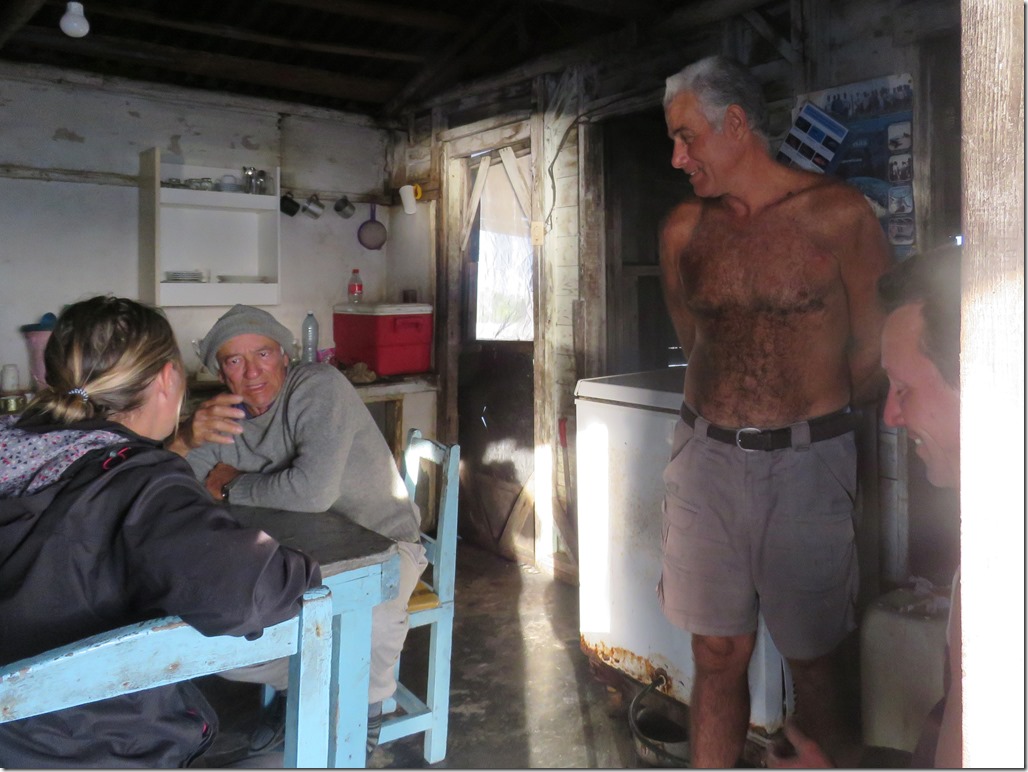
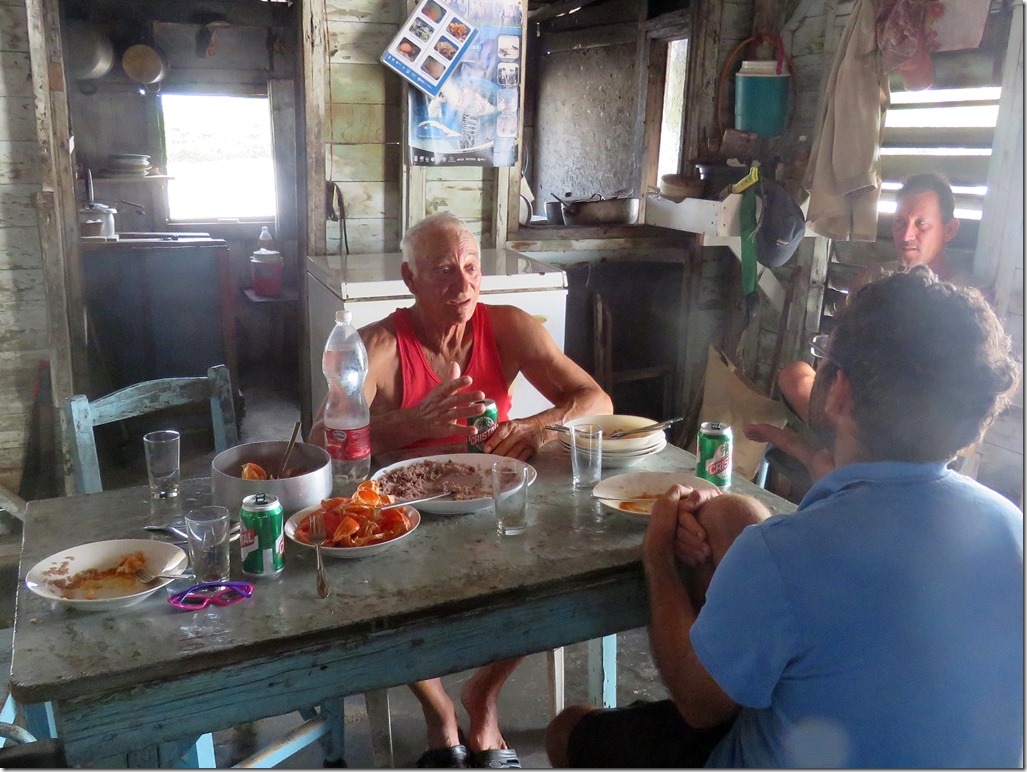
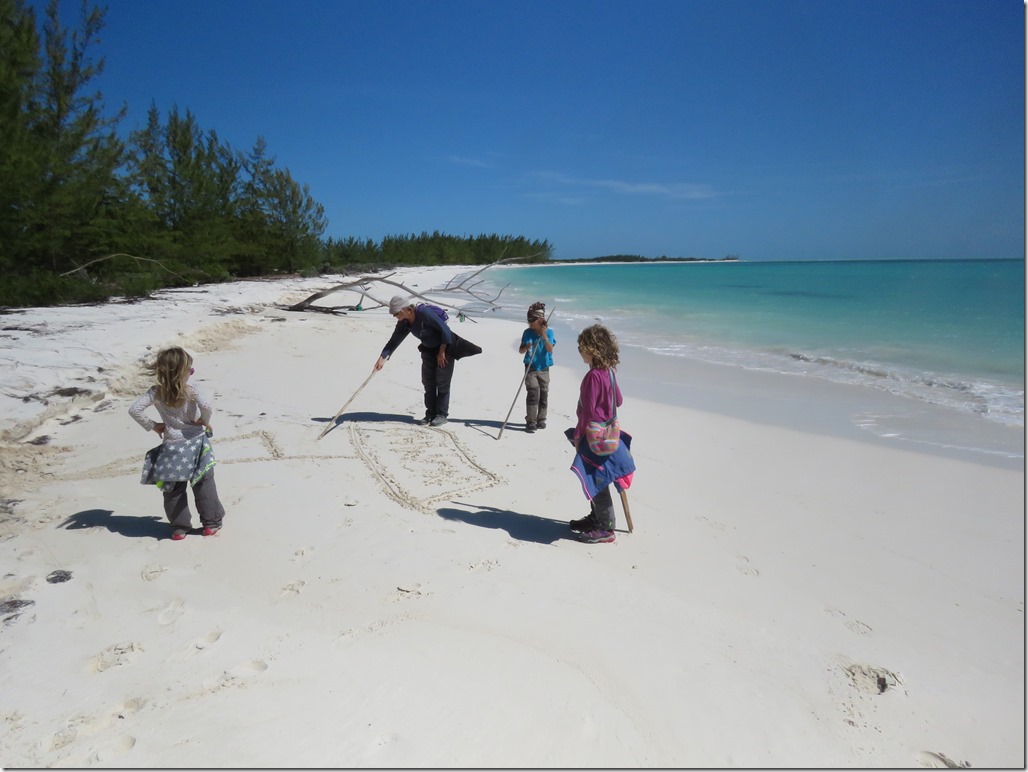
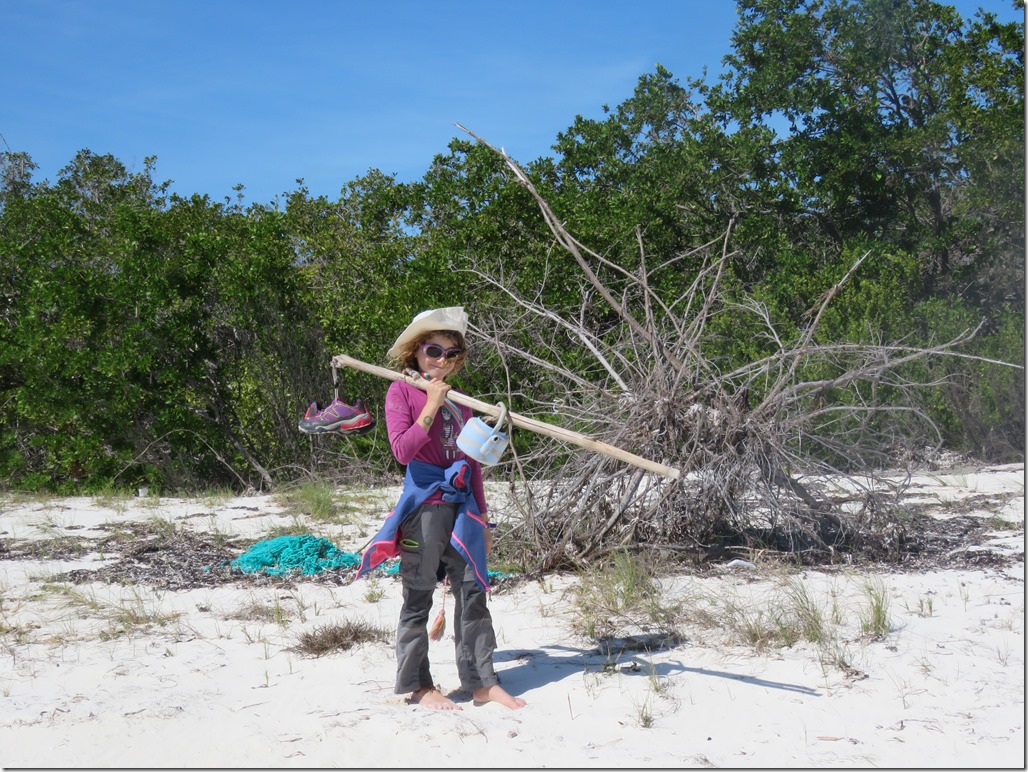
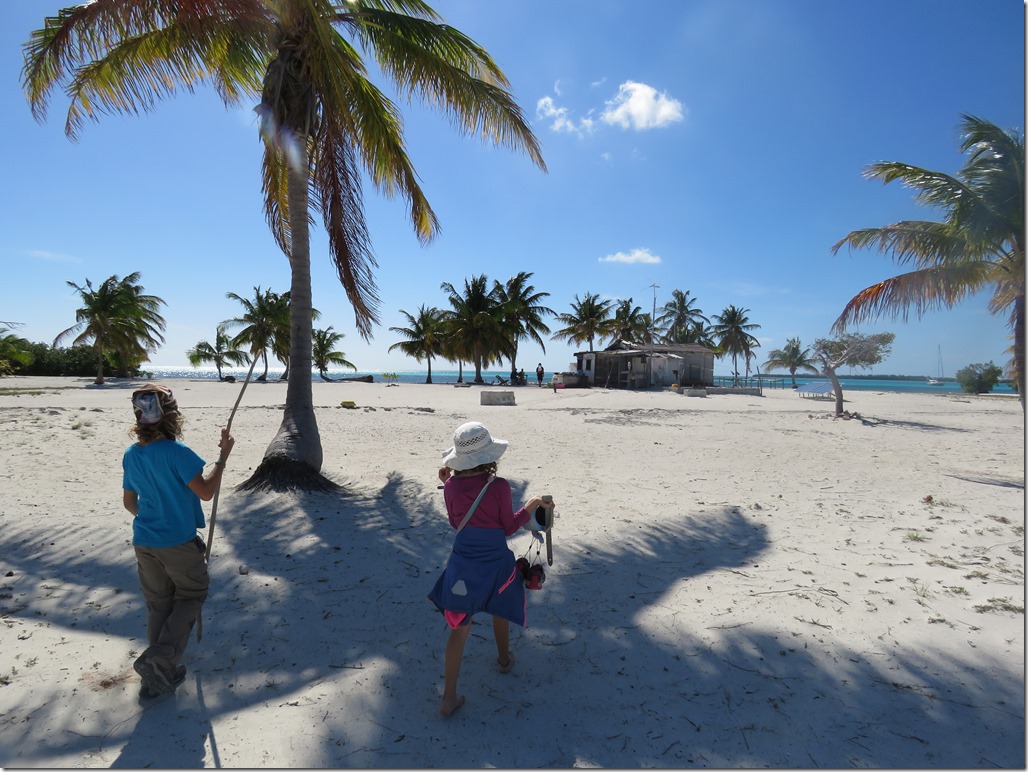

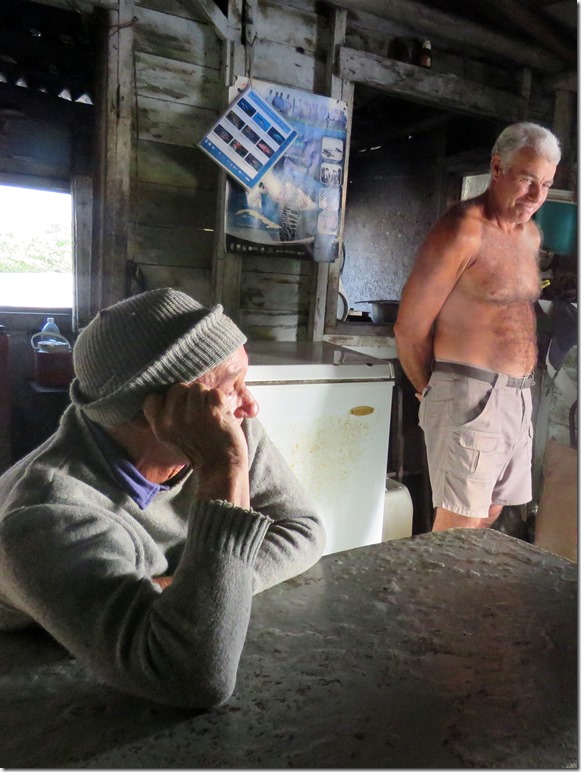
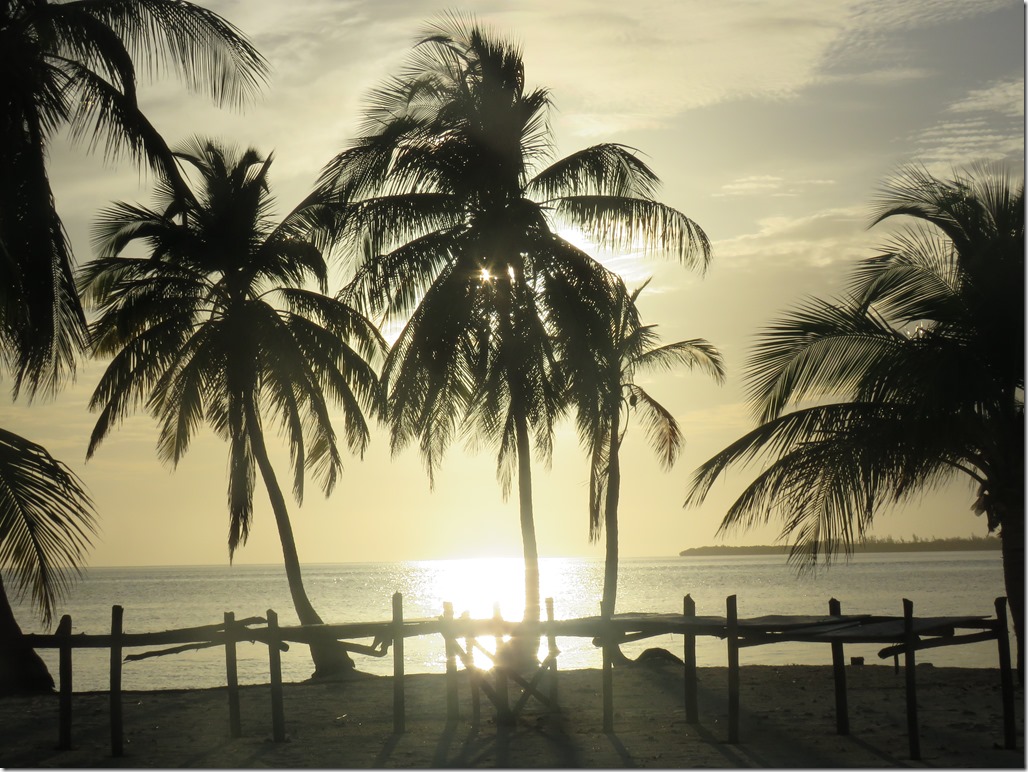
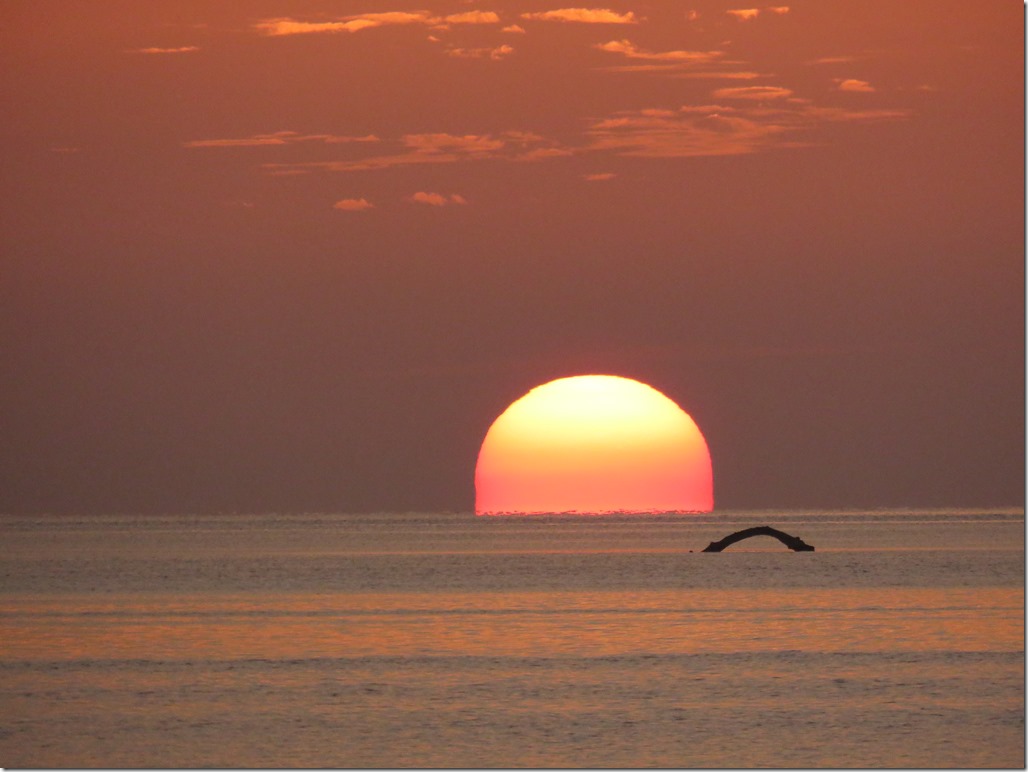
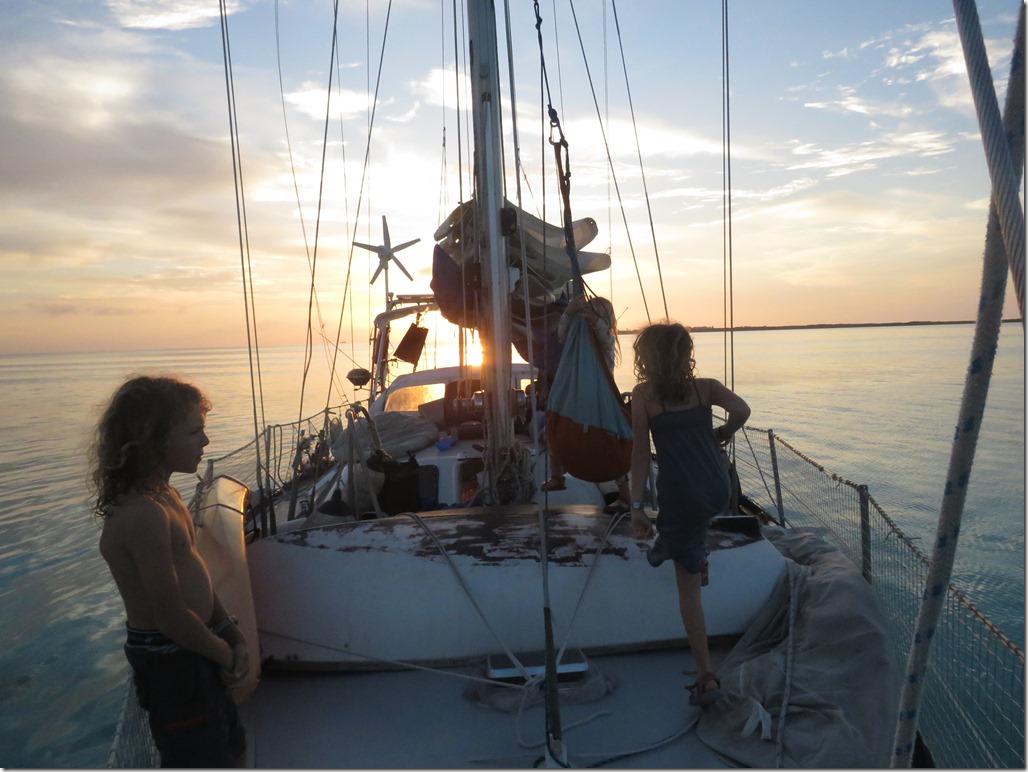
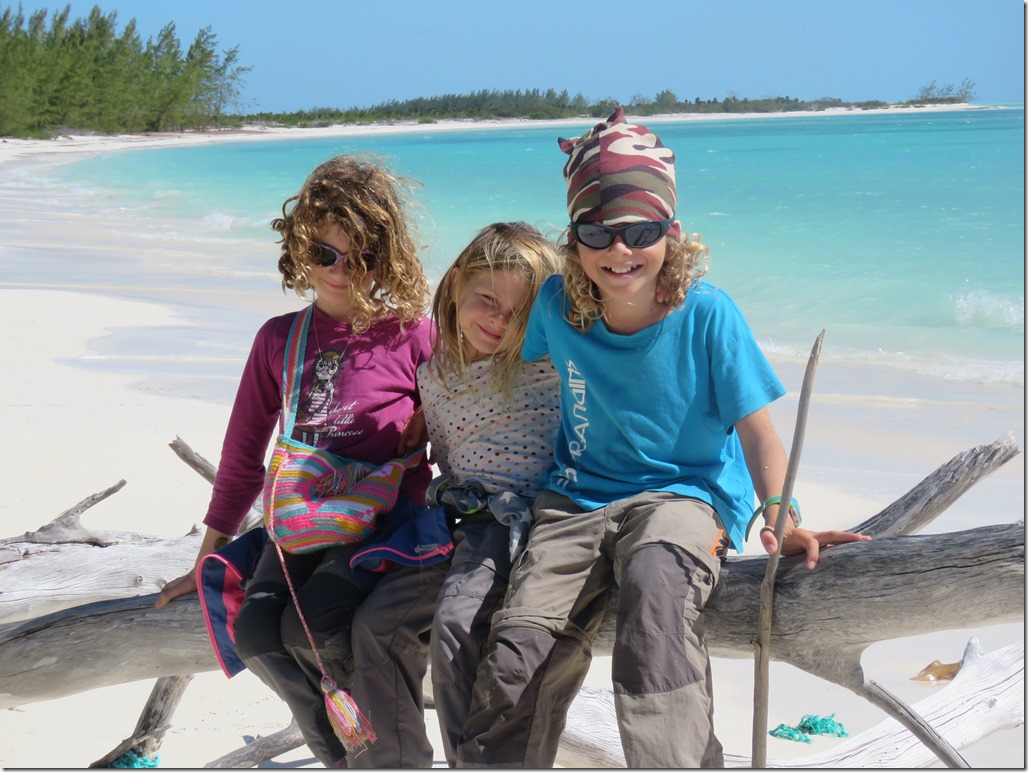
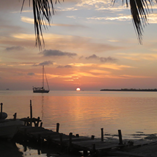











We’re in grenada again this year. Wish we got to see you here. Tess and Nell say hello.
Hello you nice family 😃. It would have been great to see you! We hope you will have a great time in Grenada !! Hugs from Isla Mujeres
Coucou les Nomads!
Qu’elle parenthèse magique ce que vous avez vécu à Cayo Campos! Hors du temps et pourtant si réelle, intense et authentique, c’est inspirant!
Vos amis les rangers, les palmiers incroyables, ce ponton accueillant, ce microcosme presque oublié qui résonne comme un trésor. Merci encore et encore pour votre partage.
Ici, j’ai l’impression que nous essayons tant bien que mal d’accompagner nos enfants, de développer leur propre regard sur la vie, la nature, l’amitié, le vivre ensemble, qu’ils aient la place de découvrir, de jouer, d’être créatifs et de se découvrir. Mais c’est rude, à l’école par exemple, ils apprennent les arbres et ne vont même pas voir les vrais arbres dans la forêt qui est à 200 m. Les enseignants sont stressés, les mettent sous pression, les parents sont stressés, les objectifs, la rentabilité. Nous avons conscience d’être la fois privilégiés et prisonniers d’un système qui se nourrit de nous et qui à besoin de fabriquer des moutons qui consomment et ne se posent pas trop de questions.
Alors nous faisons de notre mieux pour cultiver avec eux le bonheur de la simplicité, d’être dans la nature, des amitiés et du partage tout en accueillant parfois impuissant leurs interrogations et démotivations face à notre société. J’ai souvent l’impression que nous devons nager à contre-courant…
Alors, qu’elle chance ont vos Loulous de vivre cette aventure et de se nourrir de toutes ces expériences, merci pour eux!
De gros becs à tous!
Manon & Co
Merci à toi Manon pour ton message ! Nous rentrons en juillet pour une année en tout cas! Je me fais une joie de te revoir et de discuter avec toi 😍
Cool! Me réjouis de vous revoir en vrai! On aura pleins de trucs à se raconter!
En attendant, me réjouis de lire la suite!
What a wonderful report , inspiring , adventurous , sentimental …. still following you whenever time allows….
Continue to follow your heart and intuition!
Take care , Sabine
(are you planning to come back to Prangins for a year or so?)
Ja wir kommen Ende Juni Anfang Juli zurück 😍